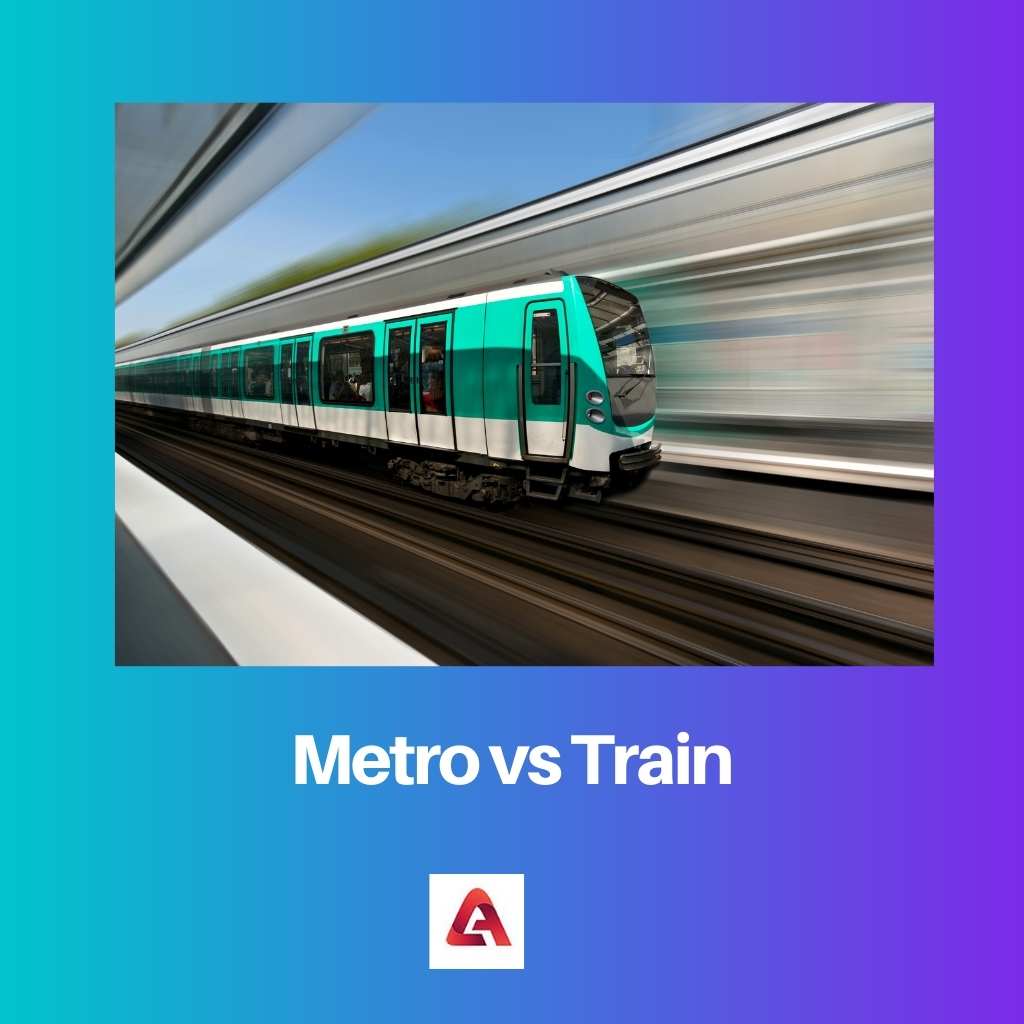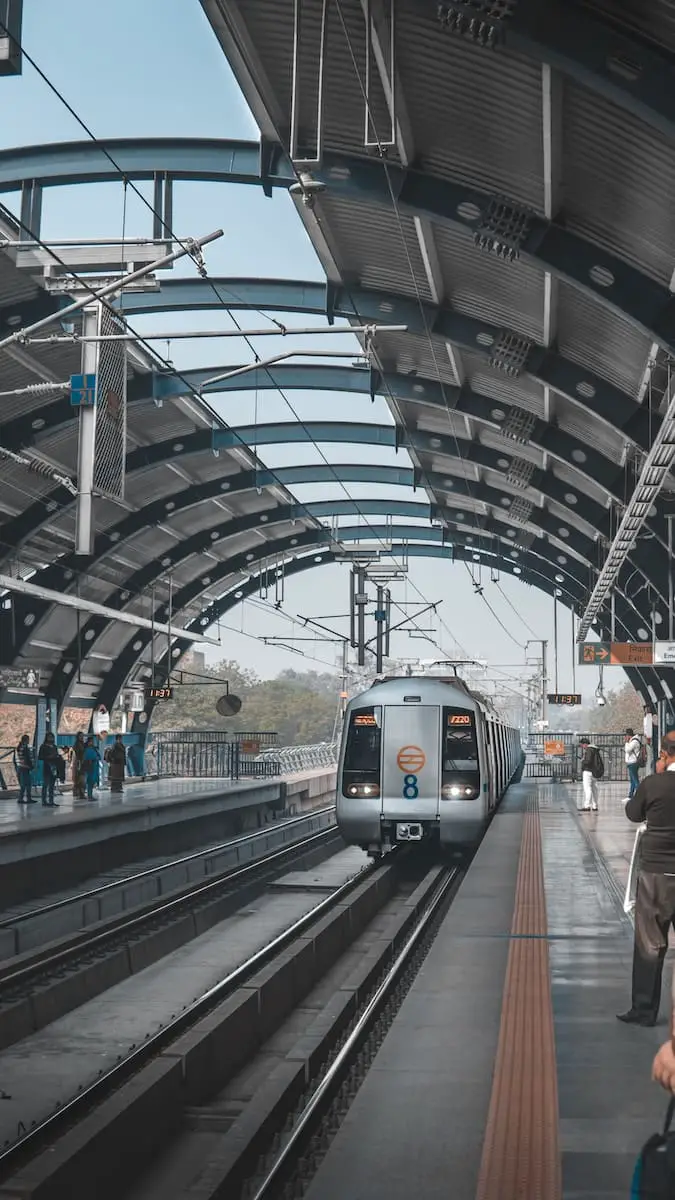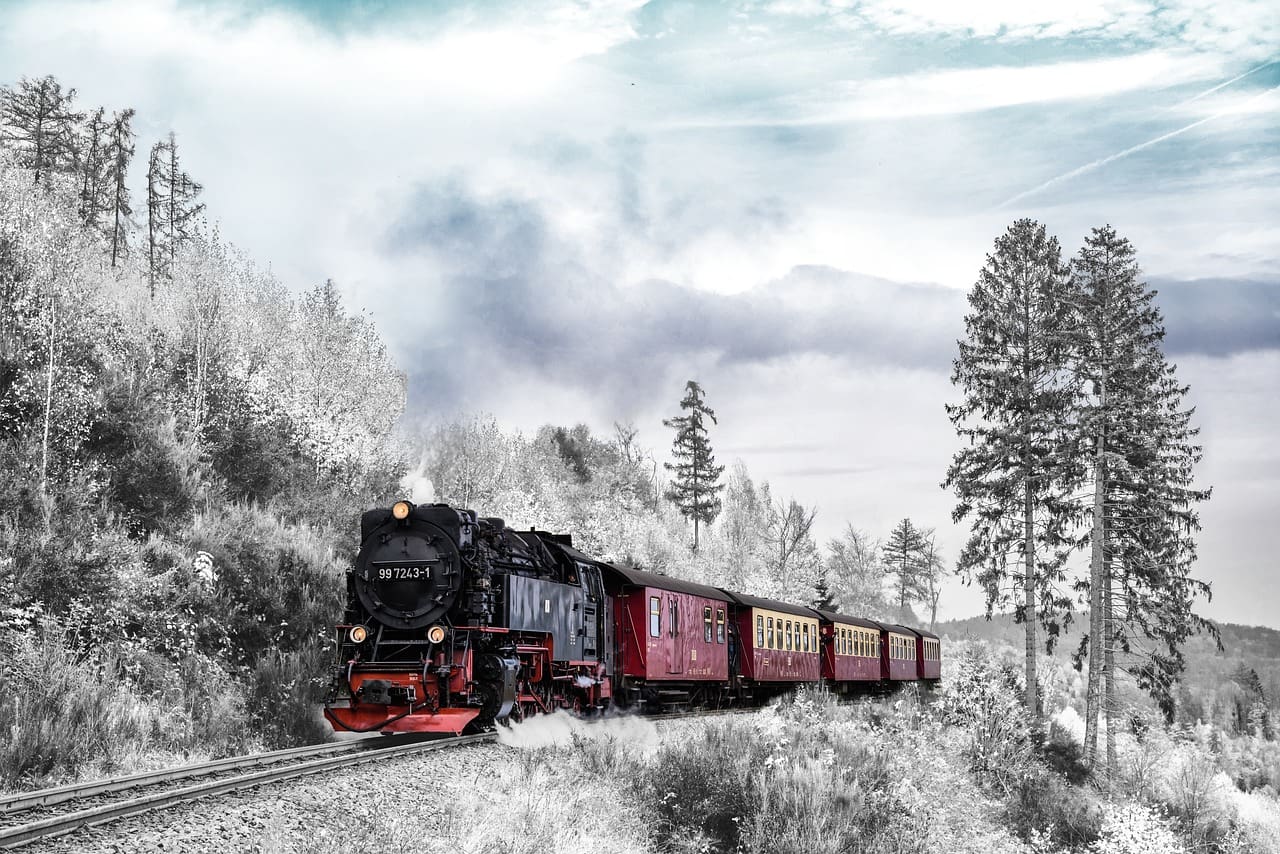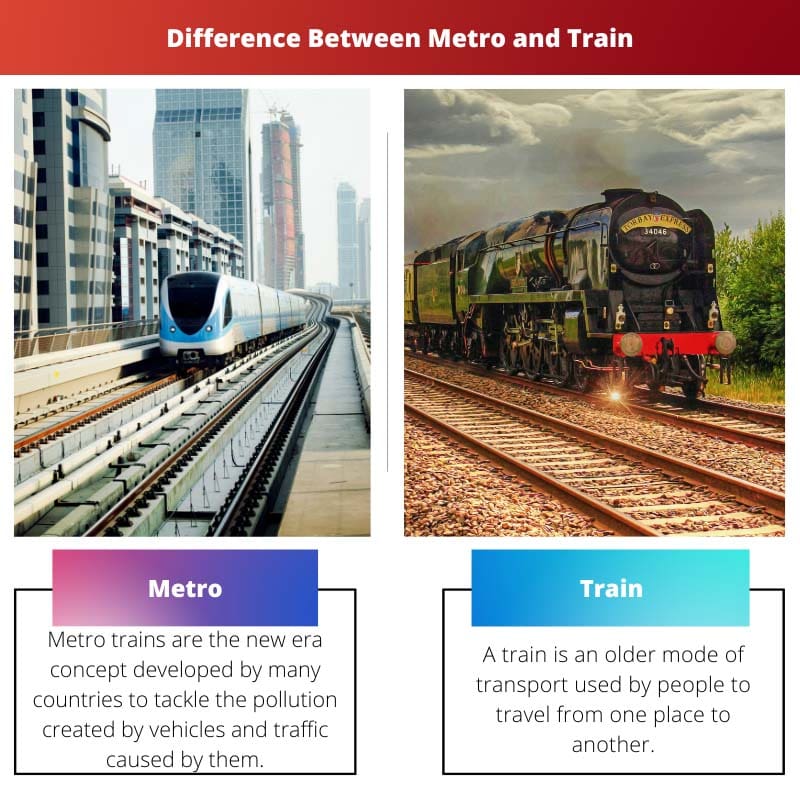Metro and Train are the two-mode of transportation that is used by the public for migrating from one place to another. A Metro is a new model concept in which people travel for a short distance in less time, while Trains are, used for long-distance travelling.
Trains have higher seating capacity than the metros.
Key Takeaways
- Metros are urban mass transit systems with frequent stops and shorter routes, while trains operate over longer distances and connect cities or regions.
- Metros primarily run on dedicated tracks or underground tunnels, whereas trains share tracks with other types of rail traffic.
- Metros have a higher frequency and shorter waiting times than trains, providing greater convenience for daily commuters.
Metro vs Train
Metro is a type of transportation that can be used to cover places at short distances. It is a fast mode of transportation. Metro does not create any noise while running. Trains can cover places at long distances. The speed of the train is slow. The ticket fare of the train is high. Train creates too much noise while running, which adds to noise pollution.

The concept of the Metro was introduced to tackle the traffic on roads, which is increasing day by day and making it hard to travel for short distances. It was also introduced to reduce the pollution produced by vehicles.
Metro is an eco-friendly train that runs on electricity. It is the fastest way to travel for short distances in any city.
Trains are, for the most part, utilized for long-distance journeys. It has both the choice of seating as well as sleeper class for the travellers.
Normally, for completing 200 to 300km, it requires six to seven hours. The speed of trains is normally in the range of 120 to 150 km/h, thus increasing the time of travelling.
Comparison Table
| Parameters of Comparison | Metro | Train |
|---|---|---|
| Speed | Speed is higher. | Trains have a lower speed compared to the Metros. |
| Capacity | Metro is having a low capacity to transport people. | Trains that have a higher capacity to transport people. |
| Ticket Fare | Ticket fare is less. | Trains have a higher ticket fare for long-distance journeys. |
| Power | Metros are powered by electricity which makes them eco-friendly to nature. | Trains are mainly powered by diesel engines as well as electric-powered engines. |
| Noise Pollution | Metros, while running does, not make any sound that makes them free to create noise pollution. | Trains while running make a lot of noise which creates noise pollution. |
What is Metro?
Metro trains are the new era concept developed by many countries to tackle the pollution created by vehicles and traffic caused by them. It is one of the fastest ways to travel within the city for a short distance.
Metro trains are high-speed trains that are powered by the electricity grid. A usual metro train will have four to five coaches, and all the coaches are air-conditioned.
As the coaches are air-conditioned, people prefer metros during the harsh summer.
The fare price is affordable for any person. Usually, these trains have a different segment of routes which can go up to 50-60km within a city.
Metros have stations after every three to four minutes. Thus, the no of stations increases concerning the distance covered.
All the metro trains have only the seating capacity with modern lighting and power switches inside a train. These trains run over the bridge that is purely constructed for the metro operation.
The route map is planned in such a way that it connects almost all the parts of the city with the centre one. For example, to connect the different parts of cities to the centre one, it will have four to five routes.

What is Train?
A train is an older mode of transport used by people to travel from one place to another. The public uses it for long-distance journeys from one city to another.
As technology is updating day by day, thus as of today, trains also have various versions like Bullet trains, High-Speed Rail, etc.
A casual train will run at the speed of 120-150km/h, which is considered a slow speed. Thus, it takes more time to cover a distance.
One of the foremost advantages of trains is that they have more power to migrate people from one place to another compared to the metros.
It can have seating and sleeper class depending on how far the destination is. While travelling via train, the passenger has the option to choose the food.
These trains have one pantry car where the fresh food is baked for the passengers.
These trains are long as they can have coaches from 15 to 20 in a single train. Thus for boarding and departure, the train needs a longer platform.
The ticket fare is calculated on the no of kilometres the passenger is travelling. But for the most time, it is higher than the metro fare.

Main Differences Between Metro and Train
- A metro is used by people for short-distance travelling within a city, whereas trains are used for long-distance journeys from one place to another.
- The fare price is low in the metros compared to the trains, which have a higher price for the journey, as the journey duration is much higher in trains.
- The number of coaches that are connected in the Metro is up to 5 to 6 coaches, while the train has 15-20 coaches.
- Metro is eco-friendly to nature as it does not create any pollution to the environment, whereas trains powered by diesel engines create massive air pollution.
- Metro does not create any noise pollution while they are operating, whereas trains running on either diesel or electricity produce a lot of noise while they are running.
- A metro train has all the air-conditioned coaches, while the train consists of a mixed combination, i.e., some coaches will be air-conditioned, and some will be not.

- https://www.sciencedirect.com/science/article/pii/S0967070X15300822
- http://www.clg-roquepertuse.ac-aix-marseille.fr/spip/sites/www.clg-roquepertuse/spip/IMG/pdf/different_trains_steve_reich-2.pdf
